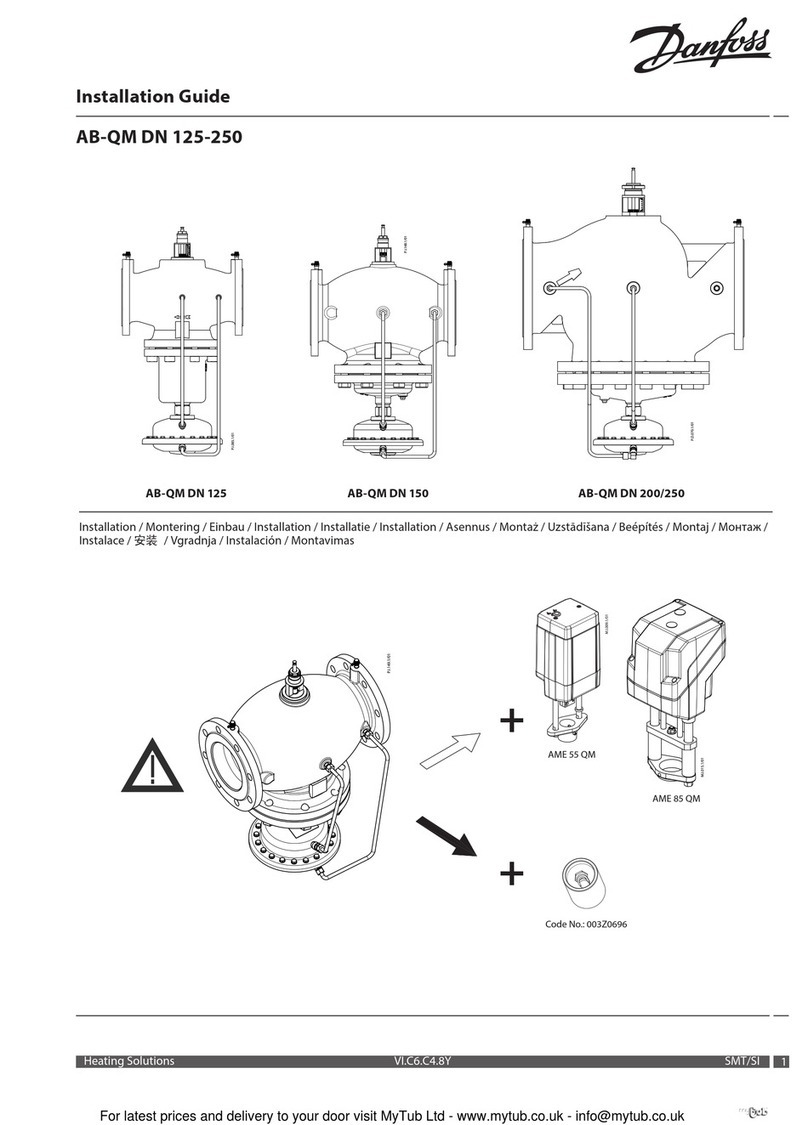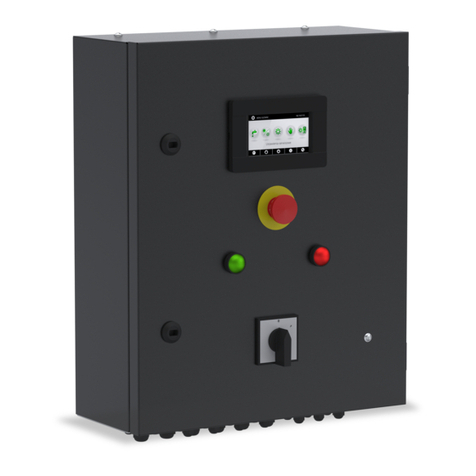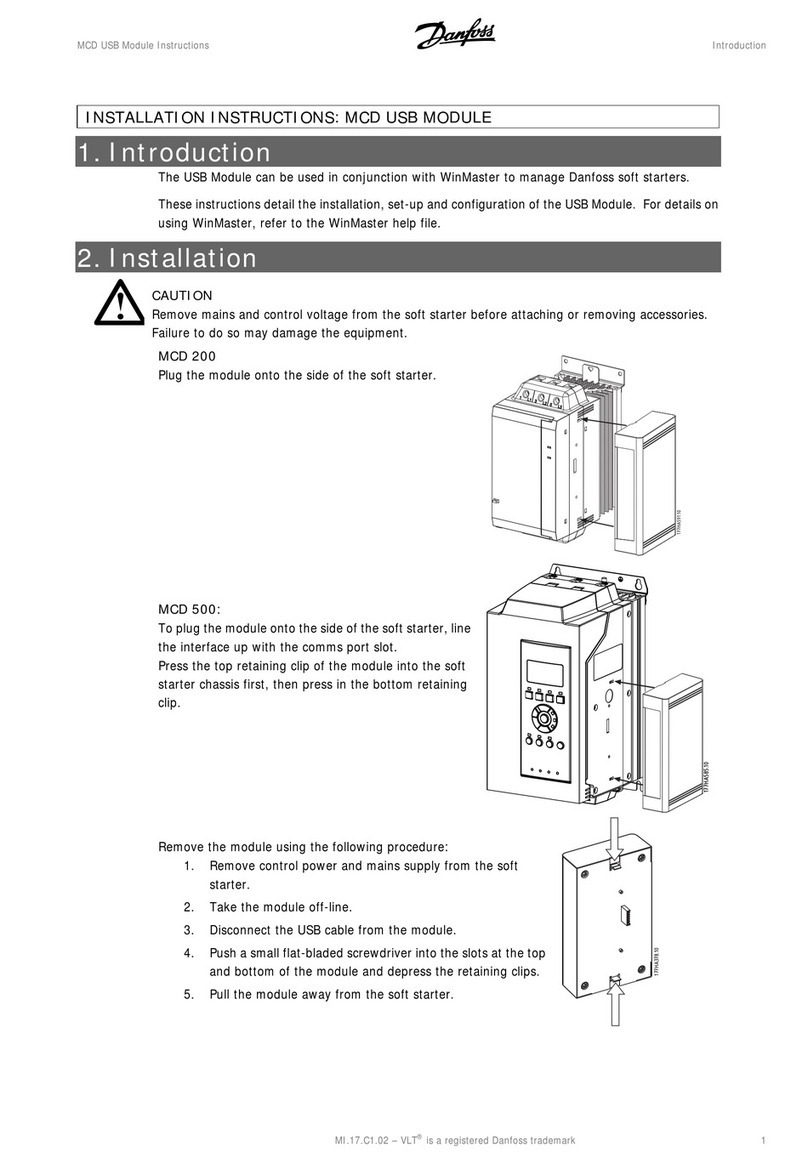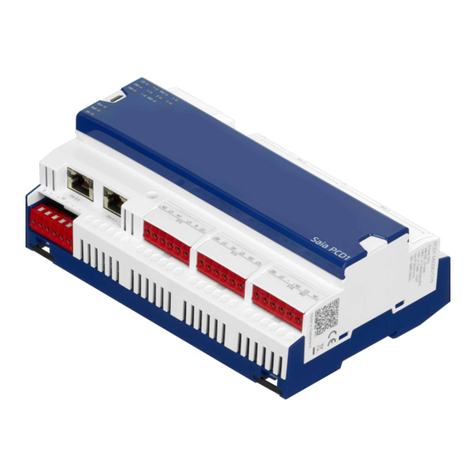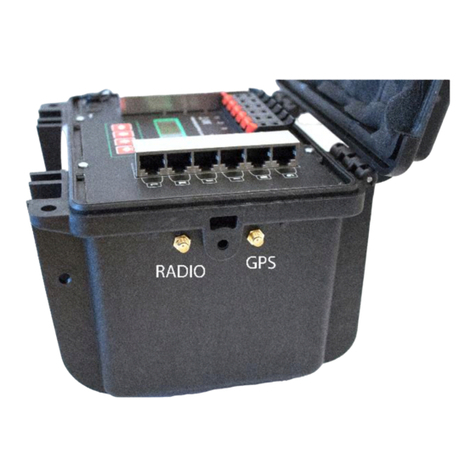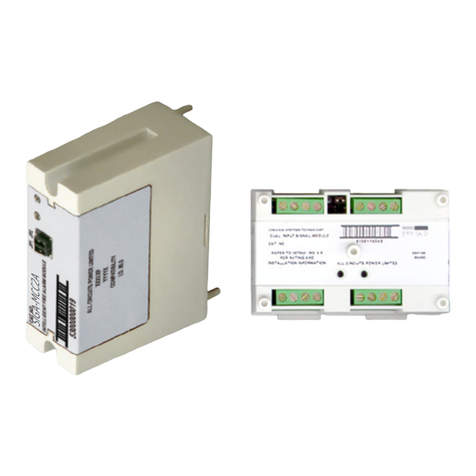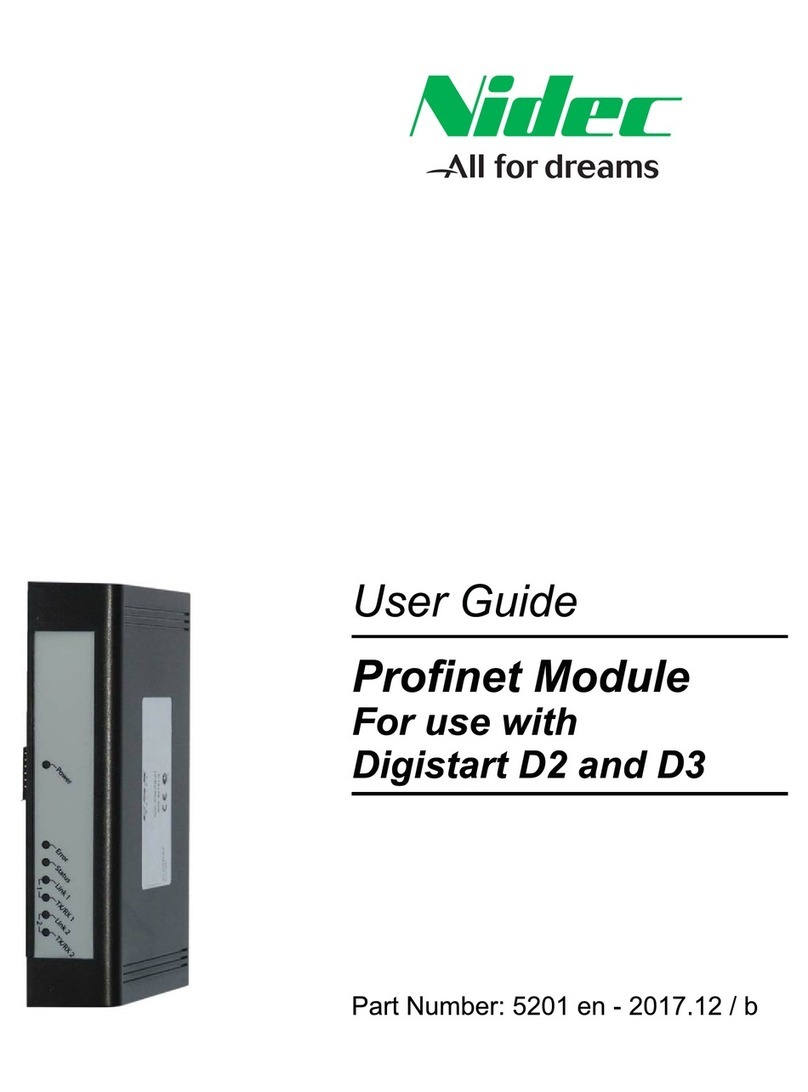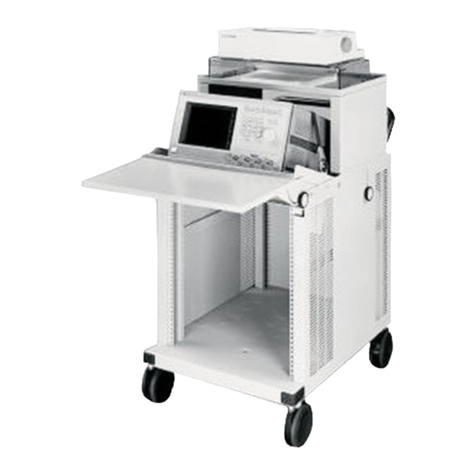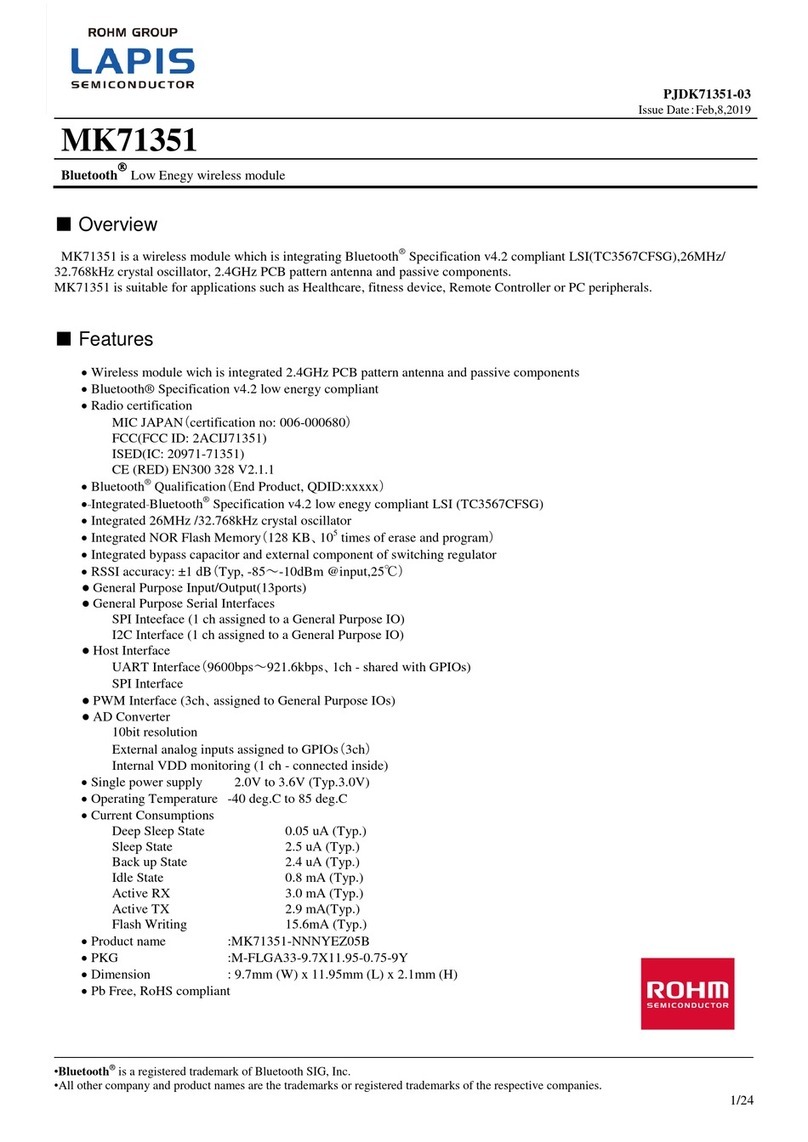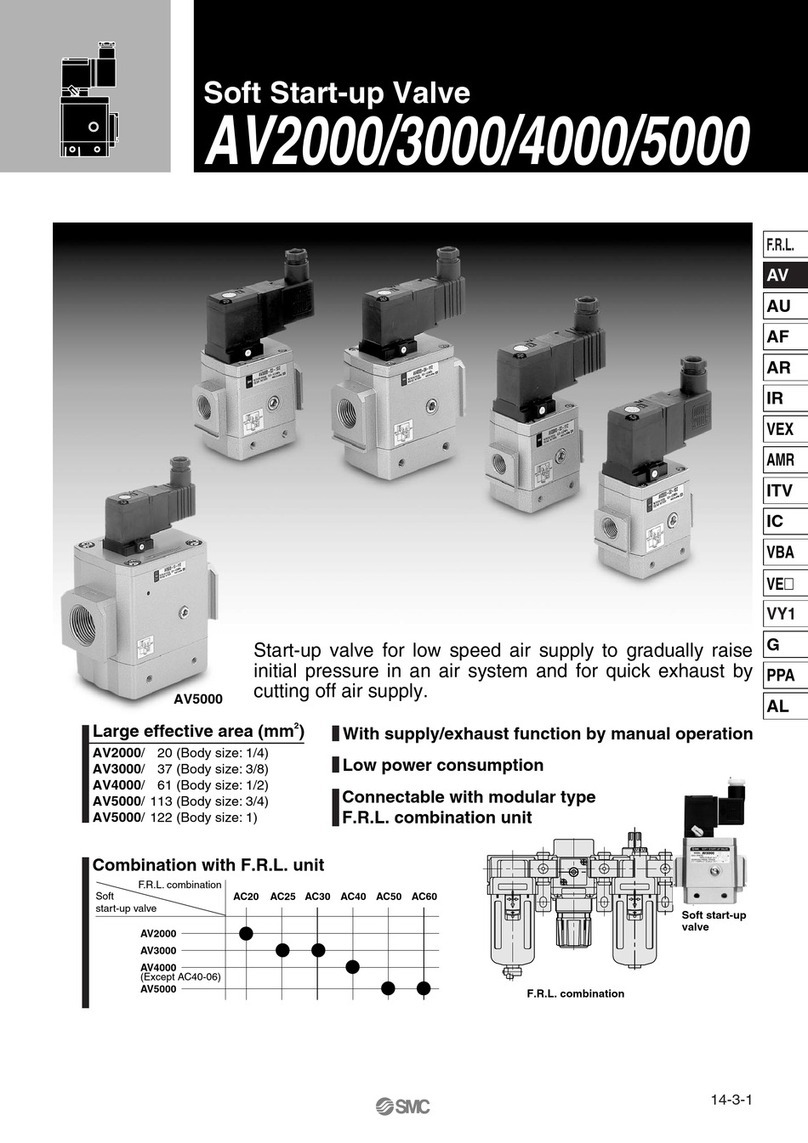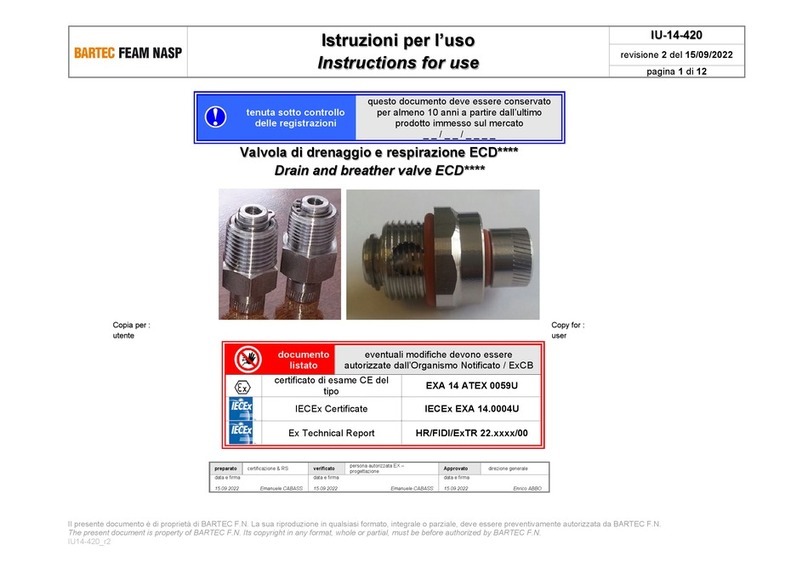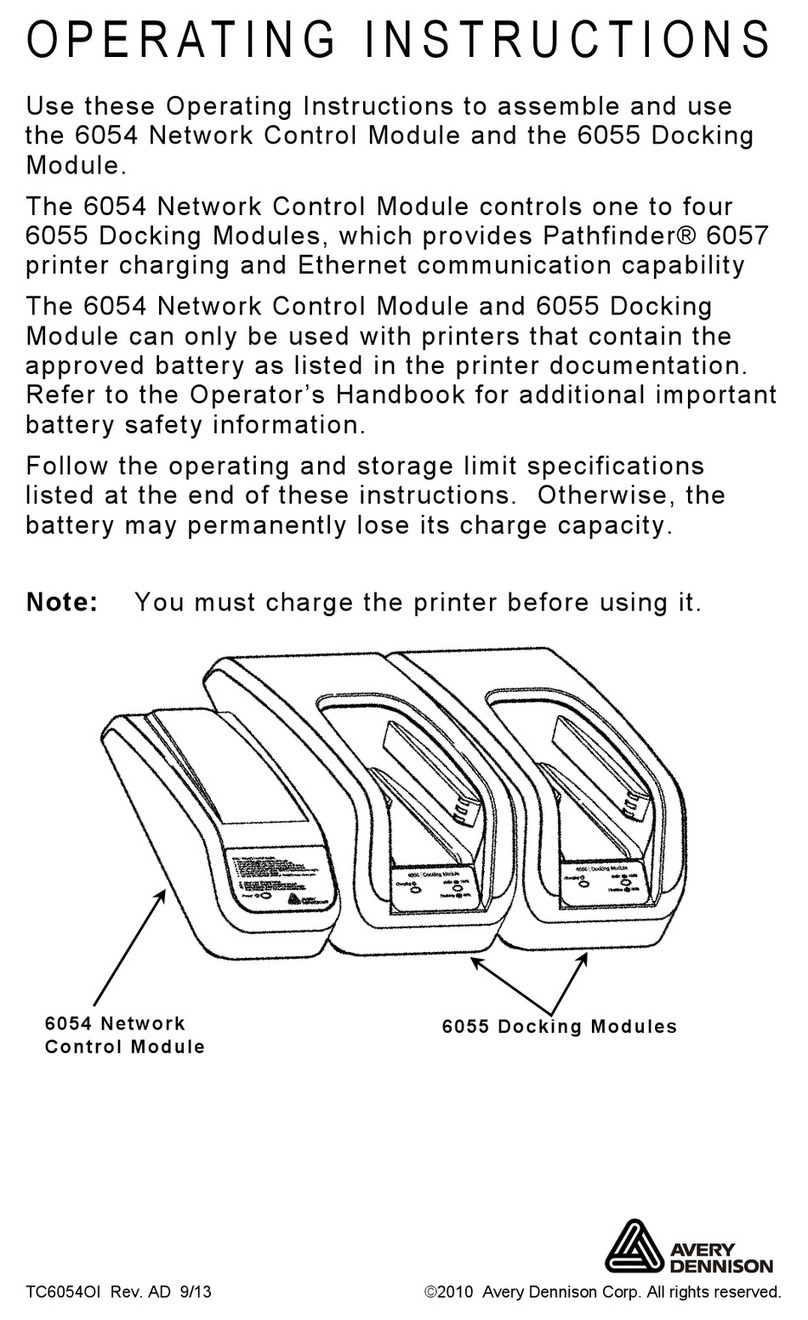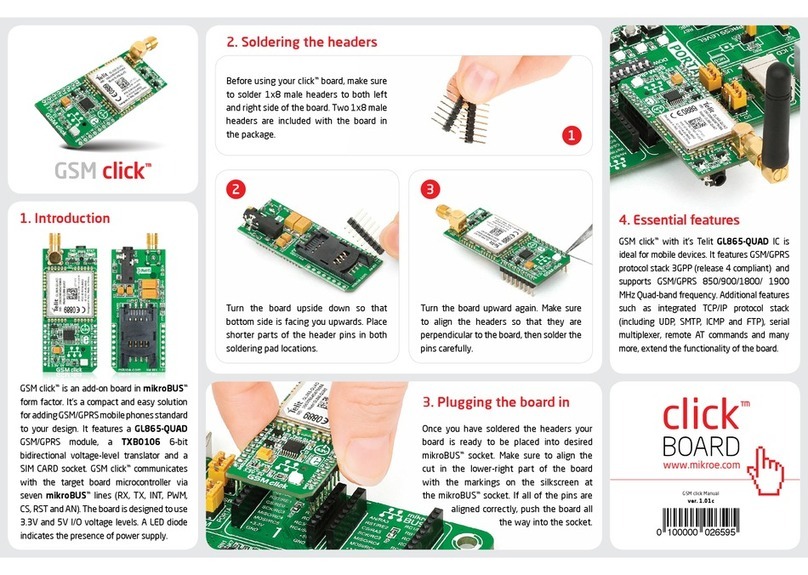SIOX 6ES2 Operating and maintenance instructions

P:\Hårdv
a
TELEF
R
Eth
e
Gene
r
The ES
2
Etherne
t
access
module
The unit
supply a
Etherne
t
Etherne
t
protocol
MODBU
AMODB
U
Block
V
ersi
o
6ES2: 6
a
ra\ES2\MAN\ES2ma
n
R
ANG AB
e
rnet/SIO
X
r
al Descriptio
n
2
module is a G
a
t
network and a S
I
to the SIOX bus
.
is intended for m
o
is fitted with plug
g
nd SIOX bus and
a
t
10BaseT (10 Mbi
t
t
is carried out in
a
or MODBUS T
C
S TCP/IP pleas
U
S TCP/IP for ES2/
Diagram
o
ns
simultaneous SIO
X
n
ual.docx/2011-09-28
X
Gatew
a
n
a
teway between
a
I
OX fieldbus provi
d
.
To simplify inst
a
o
unting on standa
r
g
able screw conne
c
a
standard RJ-45 c
o
t
/s). Communicatio
a
ccordance with th
e
C
P/IP. For a de
s
e refer to the
EX2" (or as file AE
S
X
Net and three MO
/YE
a
y ES2
a
LAN/WAN
d
ing remote
a
llation, the
r
d DIN-rails.
c
tors for the
o
nnector for
ns over the
e
SIOX Net
s
cription of
document
S
2_EX2_MODBUS
_
DBUS TCP/IP con
n
_
ENG.pdf@).
n
ections.
ES2 Ethernet/SIOX Gateway p 2
General Description .................................................................1
Block Diagram..........................................................................1
Versions...................................................................................1
Installation and Startup ............................................................3
Power Supply...........................................................................4
Configuration............................................................................4
Parameter Description .............................................................9
Electrical Specifications .........................................................13
Environmental Specifications.................................................13
Mechanical Specifications......................................................13
Assistance..............................................................................13

ES2 Ethernet/SIOX Gateway p 3
Installation and Startup
The ES2 unit is intended for installation on standard DIN-rails conforming to
EN50022 (DIN46277-3). The unit should be located inside an enclosure prohibiting
access by unauthorized personnel.
The ES2 is a bus master that supplies current to the SIOX bus in the same way as,
for instance, the K32 unit does. As a consequence, there is no galvanic isolation
between the supply and the bus.
Please note that the ES2 unit has to be configured in order to become operative.
This involves setting parameters such as IP-address, subnet mask and SIOX baud
rate. Normally, configuration has to be done before the unit is installed, mainly
because the factory default IP-address will rarely match the intended network.
Please refer to 'Configuration' on page 4.
The following electrical connections have to be made:
1. Connect a 10BaseT Ethernet cable to the RJ-45 connector. For industrial
environments this cable should be shielded for the unit to comply with the
more stringent EMC requirements.
2. If a DC supply is used:connect the positive supply to screw terminal 1 and
the negative supply to screw terminal 2. The supply voltage range is 18 - 35
V DC.
If an AC supply is used: if one of the two supply wires is regarded as
“ground”, connect it to terminal 2 and the other to terminal 1. The supply
voltage range is 12 - 24 V AC.
3. Connect the SIOX bus to screw terminals 7 and 8. Normally, the bus can be
connected unpolarized, i.e. either way, unless there are SIOX modules
connected to the bus that are sensitive to the polarity. Terminal 7 is the
positive bus terminal whereas terminal 8 is the negative. Note that the
negative supply screw terminal 2 is internally connected to terminal 8.
4. If the Digital Inputs DI1-DI4 will be used, connect the external signals to the
screw terminals 3 - 6. These inputs will accept both DC and AC voltages in
the range 0 - 35 V DC and 0 - 24 V AC.
The SIOX modules should be interconnected through a two-wire, low capacitance
twisted pair. Shielded cables may be used but unless a correct strategy for shield
grounding is adopted, it may prove to be of little benefit. Instead, the capacitance
between the shield and the bus wires will add to the total capacitive load on the
ES2 Ethernet/SIOX Gateway p 4
SIOX bus and decrease the maximum distance over which communication can be
carried out for a given bit rate. The total resistance of the bus should normally not be
higher than 2 * 50E.
Provided the ES2 unit is properly configured, it will now be ready for operation.
After power is applied to the unit, check the yellow Link LED, located on the left side
of the RJ-45 connector. It will be activated if there is a working connection to
another network unit. The green Activity LED, located on the right side of the RJ-45
connector will flash when there is activity on the Ethernet.
Power Supply
As stated, power supply input voltage range is 18 - 35 V DC or 12 - 24 V AC. Power
consumption, SIOX excluded, is approximately 1,5 W during normal operation within
specified supply voltages. Maximum power consumption will occur if the SIOX bus
is accidentally shorted. At 35 V DC supply, up to 5 W may be dissipated. To insure
that the unit will always be able to start, even with a shorted SIOX bus, the supply
must be capable to output at least 300 mA.
Configuration
Before the unit can be operative it has to be configured for the task. This is
accomplished by communicating with the unit thru an Ethernet connection in
compliance with the SIOX Net protocol. By doing so, a few configuration parameters
can be changed.
Preferably, use a network cable and connect the unit directly to the computer that
will be used for configuration. If the unit is connected directly to a LAN (Local Area
Network), there is a small possibility that the unit's IP-address will be the same as
some other equipment. This will disturb the operation of the other system. Please
contact the network administration to check this out.
If not already accomplished, download and install the Visual Setup software from
www.siox.com. Also download the ES2setup.dff which, when run by the Visual
Setup, will provide a configuration interface for the ES2 unit. At the same time it is a
good idea to download setup dff-files for other module types that are used as well.
When all is working, the ES2 unit will act as a virtual SIOX module accessible on
one SIOX address in the range 1 - 63 depending on earlier configuration. This
address cannot be used by other SIOX modules. Factory default address is 63,

ES2 Ethernet/SIOX Gateway p 5
which preferably should be left unchanged. This leaves addresses 1 - 62 for other
modules.
However, the first thing to do is to establish a connection with the unit, so we will
need to know the unit's IP-address. There are three ways to do this:
1. If the unit has previously been configured to a known IP-address, then try to
use this address. But this will only work if the unit remains installed on the
network it was originally configured for.
2. If the unit is new or otherwise set to factory default, it will be configured to IP-
address 192.168.0.234. However, as there are many network address
ranges in use, this address will not be accessible on a LAN unless that
network uses the 192.168.0.xxx address range.
3. The third way to get in contact with the unit is more universal and will also
make it possible to recover a module set at an unknown IP-address. To
facilitate this, the unit is equipped with a push button Reconfiguration Switch
at position ‘R’, see picture below. Use a suitable tool to carefully press the
switch under the plastic cover. When power is applied to the unit, the green
LED in position L1 will make a short blink. If the switch is pressed within two
seconds after the blink, it will set the unit in a special 'hunt' mode and the
LED will be lit. The unit will then be able to discover what network address
range that is used, and readdress itself accordingly. It is described in detail
below. Please note, if the switch is pressed during power-up (as was the
case for ES1module) the ES2 will enter a firmware update mode instead. If
this happened inadvertently, recover by removing the power and redo the
operation.
ES2 Ethernet/SIOX Gateway p 6
Now use the Visual Setup software to run the ES2setup.dff in an attempt to
establish a connection with the unit on IP-address xxx.xxx.xxx.234 (press F6 to
enter SIOX Bus setup to change IP-address). The 'xxx'-marked portions of the IP-
address should be filled in with values corresponding to the address range used by
the local network (or a directly connected PC) to which the unit is now connected.
For instance, if the local network is configured to use the 192.168.4.xxx range, then
the ES2 unit will be accessible at IP-address 192.168.4.234. Enter the address in
the Server Address field (seen by pressing F6 to enter SIOX Bus setup).
When an access attempt to the ES2 unit is detected, it will reconfigure itself and
perform a restart. Occasionally, it might be necessary to retry the access attempt by
pressing F6 and clicking on the ReInit button on the rigt side.
Access to the unit should now be possible. Unless the ES2 unit uses the default
address 63, a search must be performed over the entire SIOX bus address range 1
- 63 in order to find the ES2 unit. Note that several other SIOX modules may appear
if a SIOX bus is connected to the ES2.
To summarize the steps involved to get in contact with the unit:
1. Connect the ES2 unit to an Ethernet, either to a LAN or directly to another
computer.
2. When power to the unit is applied, push the Reconfiguration Switch within
two seconds after the short blink on LED L1. The LED should be activated.
3. Try to access the unit at IP-address xxx.xxx.xxx.234. If the module’s SIOX
address is different from the default address 63, a search may be necessary
that will query the SIOX bus for answering modules. In the list of detected
modules, select the ES2 unit for further operations.
4. When contact is established, the unit may be reconfigured. Please note, if
configuration of another ES2 module is attempted after a previous one, it will
take a few minutes for detection. This is because the communication
attempts will use the previous ES2 unit's MAC-address (Media Access
Control address). After some time there will be a new request for the MAC-
address that the new ES2 uses. It will answer to this request after which
communication will be possible.
If the ARP cache in the PC (Personal Computer) is cleared before contact is
attempted, answer from the ES2 unit will be almost immediate. This forces the PC to
send an ARP request, which the ES2 is waiting for. The ARP cache is cleared by
clicking on Start/Run and then entering the command string "arp -d * " followed by
clicking OK. If several ES2 units should be configured, execute this command each
time a new unit is connected in order to speed up the process.

ES2 Ethernet/SIOX Gateway p 7
When contact is established with the unit, the following configurations may be
checked and changed:
•IP-address and Subnet mask for the network where the unit eventually will
be installed. It might be a good idea to perform these changes as the final
ones after the rest of the configurations are handled. Otherwise, an
inadvertent restart of the unit will necessitate a repeated recovery process
as previously described.
•Default Gateway address. Used by the ES2 to know where to send
communications with destination addresses outside the network where it is
located. Will typically be the address of the firewall/router.
•TCP port number used for SIOX Net communication. This is the port
number that the central should try to connect to when establishing contact
with the ES2. Factory default is 1024 which will usually work fine if the unit
is located on a LAN (Local Area Network) or directly connected to the
Internet. However, if the unit is located on a LAN and access from Internet
is desirable, firewall configurations must be considered as well, as they
normally will prevent connection attempts from the Internet to a LAN. In this
case a 'hole' thru the firewall specifically directed to the ES2 IP-address
must be opened. This is perfectly safe for the LAN and will not represent a
security risk because the ES2 unit does not contain any operating system
that can be manipulated to perform malicious activity on the LAN. Please
contact the network administration to check if this is feasible. However, it is
very important that the firewall configuration will be restored in case the
ES2 unit is permanently removed. Otherwise another equipment occupying
the same IP-address could possibly represent a security hazard.
•ES2 address (1 - 63) on the SIOX bus for its virtual SIOX module, thru which
these configurations are carried out. This address can not be used by any
SIOX module connected to the SIOX bus. Factory default address is 63.
•SIOX bus baud rate. Available baud rates are 300, 600, 1200, 2400, 4800,
9600 and 19200 baud. Factory default is 4800 baud.
•SIOX bus current drive capability 0, 25, 50, 75 or 100 mA. Factory default is
100 mA.
•Additional SIOX timeout (0 - 63 ms), used in conjunction with modems or
radio modules where delays inherent in these units must be considered.
Factory default is 0 ms.
ES2 Ethernet/SIOX Gateway p 8
Start configuration by writing SIOX baud rate to parameter with the Write Enable
flag set. Refer to Parameter Description below for further details. If using the
ES2setup.dff, simply check the box EEPROM Write Enable before changing any
configuration, otherwise it will not be possible to make any changes.
When finished, move the unit to its intended installation point. The new
configurations will take effect after power is applied. Access to the unit may quickly
be tested by sending a 'ping' to it. Use Visual Setup or the intended system
application for further testing including access to the SIOX bus to verify that all
connected modules are responding.

ES2 Ethernet/SIOX Gateway p 9
Parameter Description
The ES2 contains an EEPROM to permanently store configuration data. Most
changes requires a restart of the unit, either by power off/on or by writing FFFF16 to
the first parameter number 0. This initiates a full soft reset, using the updated
EEPROM values for initialization. All changes should be carried out in EEPROM.
Writing to RAM has no effect. EEPROM parameters used are parameter numbers
00 - 2F16 except for 02 - 0516 and 11 - 1916 that are reserved for future use.
Likewise, parameters from 3016 and upwards are reserved for the application
running in the ES2 unit.
Definitions of Parameter setup
(XXXX16) Factory preset information for the parameter.
tttt One nibble (4bit), where the left bit is the most
significant bit and the right bit is the least significant.
tttt tttt tttt tttt One parameter (2byte/16bit), where the left byte is the
most significant byte and the right byte is the least
significant.
’ Only this bit is relevant.
t This bit is used for other purposes.
Note that the Write Enable flag must be set to allow writing to other
parameters. Therefore, start the configuration by writing the desired SIOX
baud rate to this parameter with the Write Enable flag set.
For instance, writing 890016 will set the SIOX baud rate to 19200 baud and also set
the Write Enable flag so other parameters can be written, too. The flag, if set, will
EEPROM Parameter Setup (16bits/ parameter):
Parameter 00: (070016) Restart unit to effectuate change
‘’’’ ‘’’’ ‘’’’ ‘’’’ FFFF16 = Restart of the unit.
‘222 tttt tttt tttt 1= Write Enable flag. Cleared by reset.
tttt ‘’’’ tttt tttt 3 = 300 bits/second transmission speed.
4 = 600 bits/second transmission speed.
5 = 1200 bits/second transmission speed.
6 = 2400 bits/second transmission speed.
7 = 4800 bits/second transmission speed.
8 = 9600 bits/second transmission speed.
9 = 19200 bits/second transmission speed.
ES2 Ethernet/SIOX Gateway p 10
automatically be cleared at next power-on. Otherwise, if power to the unit cannot be
cycled when the configuration has been completed, either repeat the write but
without the Write Enable set, or write FFFF16 to the parameter for a restart of the
unit.
Parameter 01: (3F0416) Unit does not need to be restarted after
change
tt’’ ‘’’’ tttt tttt 01- 3F16 = Module address
tttt tttt tttt t''' SIOX bus current.
0 = 0 mA. Another unit must supply the current.
1 = 25 mA.
2 = 50 mA.
3 = 75 mA.
4 = 100 mA.
Normally, a bus current of 100 mA is recommended. However, if the bus wires are
very resistive, ES2 has the provision for selectable bus current and may therefore
be able to communicate on wires otherwise deemed unusable. By decreasing the
bus current, voltage lost in the wires will be correspondingly lower. However, there
are two disadvantages of lower bus current. Firstly, the lower current will lead to a
slower charge/recharge of the wire capacitance which may necessitate a change to
a lower baud rate. Secondly, fewer SIOX modules can be connected to the bus.
As a complement, the SIOX R30 Bus Expander unit can be used if a bus segment
needs to be strengthened.
Parameter 05: (000016)
tttt tttt tttt ‘’’’ XXX0-XXXF16 = Status for Digital Inputs DI4-DI1.
Parameter 06: (040016) Restart unit to effectuate change
‘’’’ ‘’’’ ‘’’’ ‘’’’ 0400-FFFF16 = TCP Port Number 1024-6553510.
This is the port number that the central should try to connect to when establishing
contact with the ES2 using the SIOXNet protocol. Default port number is 102410.

ES2 Ethernet/SIOX Gateway p 11
Parameter 07: (000016) Restart unit to effectuate change
tttt tttt tt'' ''''
00-3F16 = Additional SIOX timeout 0-6310 ms. Leave at
zero for normal conditions. However, if there are special
SIOX modules connected to the bus, i.e. modems or
radio modules, extra timeout may be added to
compensate for the delay in these units.
Parameter 08: (00C016) Restart unit to effectuate change
‘’’’ ‘’’’ ‘’’’ ‘’’’ 0000-00FF16 = First byte of IP-address 0-25510.
Parameter 09: (00A816) Restart unit to effectuate change
‘’’’ ‘’’’ ‘’’’ ‘’’’
0000-00FF16 = Second byte of IP-address 0-25510.
Parameter 0A: (000016) Restart unit to effectuate change
‘’’’ ‘’’’ ‘’’’ ‘’’’
0000-00FF16 = Third byte of IP-address 0-25510.
Parameter 0B: (00EA16) Restart unit to effectuate change
‘’’’ ‘’’’ ‘’’’ ‘’’’
0001-00FE16 = Fourth byte of IP-address 1-25410.
Parameter 0C: (00FF16) Restart unit to effectuate change
‘’’’ ‘’’’ ‘’’’ ‘’’’
0000-00FF16 = First byte of subnet mask 0-25510.
Parameter 0D: (00FF16) Restart unit to effectuate change
‘’’’ ‘’’’ ‘’’’ ‘’’’
0000-00FF16 = Second byte of subnet mask 0-25510.
Parameter 0E: (00FF16) Restart unit to effectuate change
‘’’’ ‘’’’ ‘’’’ ‘’’’
0000-00FF16 = Third byte of subnet mask 0-25510.
Parameter 0F: (000016) Restart unit to effectuate change
‘’’’ ‘’’’ ‘’’’ ‘’’’
0000-00FF16 = Fourth byte of subnet mask 0-25510.
Parameter 16: (000016) Restart unit to effectuate change
‘’’’ ‘’’’ ‘’’’ ‘’’’
0000-00FF16 = First byte of Default Gateway address
0-25510.
ES2 Ethernet/SIOX Gateway p 12
Parameter 17: (000016) Restart unit to effectuate change
‘’’’ ‘’’’ ‘’’’ ‘’’’ 0000-00FF16 = Second byte of Default Gateway address
0-25510.
Parameter 18: (000016) Restart unit to effectuate change
‘’’’ ‘’’’ ‘’’’ ‘’’’ 0000-00FF16 = Third byte of Default Gateway address
0-25510.
Parameter 19: (000016) Restart unit to effectuate change
‘’’’ ‘’’’ ‘’’’ ‘’’’ 0000-00FF16 = Fourth byte of Default Gateway address
0-25510.
The Default Gateway address should be configured if there is need for the ES2 to
be accessed from another network. This address tells the ES2 where to send its
answers in order to reach the external network. For instance, a firewall/router is
connected between the Internet and the LAN and access from Internet to the ES2 is
desired. To accomplish this a 'hole' in the firewall has to be opened to the IP-
address and port number used by the ES2, and the ES2 Default Gateway address
parameters should be set equal to the address that the firewall/router has on the
LAN side.
Parameter 1A - 1F: (000016)
‘’’’ ‘’’’ ‘’’’ ‘’’’ 0000-00FF16 = Module MAC-address. Not user
configurable.
Parameter 20 - 2F: (000016)
‘’’’ ‘’’’ ‘’’’ ‘’’’ Reserved for future use. Should be set to zero.
Parameter 30 - FFF: (000016)
‘’’’ ‘’’’ ‘’’’ ‘’’’ Reserved for application use.

ES2 Ethernet/SIOX Gateway p 13
Electrical Specifications
(Tamb = 20 °C) Min Typ Max Unit
Power Supply Voltage 18 24 35 V DC
Power Supply Voltage 12 18 24 V AC
Power Supply Current (@24 VDC)
Idle, no SIOX communication
Normal operation
SIOX bus shorted
55
90
150
mA
mA
mA
DI1-4 Input voltage 35 V DC
DI1-4 Input voltage 24 V AC
DI1-4 Input activation voltage 10 V DC
DI1-4 Input activation voltage 10 V AC
Environmental Specifications
Min Typ Max Unit
Operating Temperature Range 0 +55
°C
Storage Temperature Range -20 +70
°C
Mechanical Specifications
Case Size (W x H x D) 71 x 108 x 58 mm
Weight 125 g
Assistance
on safety and technical matters is available from:
TELEFRANG AB Tel: +46 31 40 30 60
Varbergsgatan 8 Fax: +46 31 40 20 25
SWEDEN Visual Setup Download:
www.siox.com
This manual suits for next models
1
Table of contents
